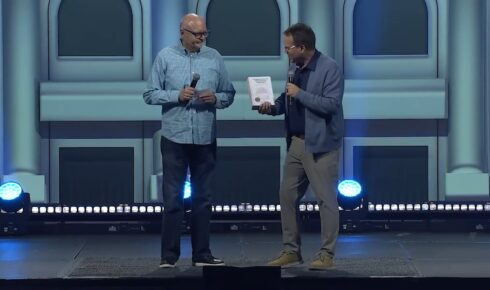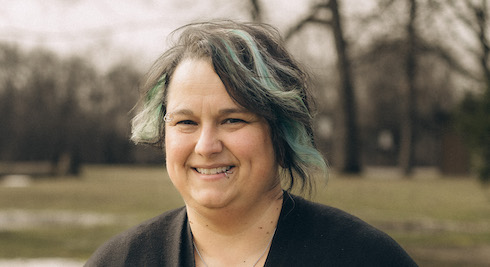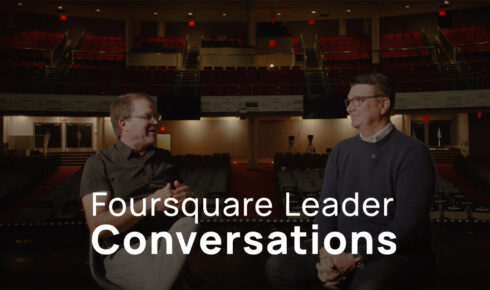The following is a part of our weekly devotional series, which is a companion to the 2013 Foursquare Life Journal. This week’s Bible reading comes from Ezra 1-4, Psalms 84-85, Psalm 113, Psalm 127, Psalm 129, Daniel 11-12, Haggai 1-2, Zechariah 1-6 and Luke 6-12.
Recently, the story of Jesus’ encounter with the widow in Nain hit me in a new light because of an experience I had in rural Ethiopia. Our congregation had been working in Ethiopia for several years, and I was there with team of 15 college students to work with the local churches and the orphans in our program.
As we walked through the crowds on the market day in town, a group of men passed us holding a long, wide pallet at shoulder height. Atop the pallet was what looked like a pile of blankets, from afar, but I came to see it was actually the shape of a body with a thin sheet draped overtop.
“What’s going on there?” I asked our guide as the men with the body became lost in the crowd behind us.
“It’s the family removing the body,” he explained. “Another death in the village.” It all happened so quickly that there wasn’t really time to understand what had happened. In a town like Gojo, untimely death is all too common.
Such was the case in Jesus’ day. In Luke 7:11-17, we read about the time Jesus traveled to Nain after the miraculous healing of the centurion’s servant in Capernaum. As Jesus came toward the city gates, he noticed a similar sight—a dead man was being carried out of town, followed by a small procession. Luke tells us that the deceased was a young man, the only son of his widowed mother. Looking at the woman in her grief, Jesus was moved with compassion. He spoke to the boy—”Young man, I say to you, arise” (v.14, NKJV)—and immediately the dead man sat up and began to speak!
I’ve always had a fascination with this story. It’s one of fewer than 10 times in Scripture where we see Jesus raise someone from the dead. But this story strikes me as particularly touching because of how Jesus restored a family. This woman had lost her husband, and now her only son. She was left alone, desolate and vulnerable, because she had no remaining family.
The miraculous intervention of the Savior in this account was precipitated by three things:
• First, He saw her. How easy it is, when death is all around, to look right past a person in need.
• Second, He felt compassion for her. The heart of the Lord is always moved with compassion when families are mourning a loss.
• Third, after raising the young man to life, Jesus restored him to his mother.
Yesterday afternoon, a man from our church passed away after a five-month battle with cancer. He left his wife and his 16-year-old son behind. As I spoke with his mourning wife, I was asking the Lord to reveal His heart in her circumstance. Suddenly it hit me—Jesus’ response to her is the same as His response to the widow at Nain. In fact, every time a family is broken—be it by death, divorce, addiction or depression—Jesus sees it, He feels compassion, and He desires restoration. Whether it’s through miraculous healing, the raising of the dead, orphan care, addiction recovery or prayers for reconciliation, God is using His church to heal hearts and families.
By: Peter Henderson, senior pastor of Living Way Fellowship (Littleton Foursquare Church) in Highlands Ranch, Colo.
Download the yearlong reading plan (PDF, 80 KB), or sign up for the full, online version of the Life Journal. To purchase a Life Journal for your own use, or to place a bulk order for church-wide use, visit FoursquareJournal.com. Learn more about Foursquare’s 2013 Life Journal project.


